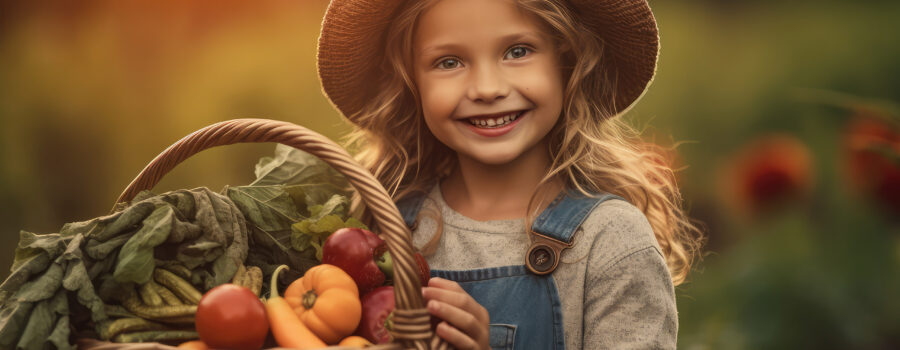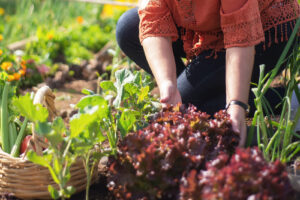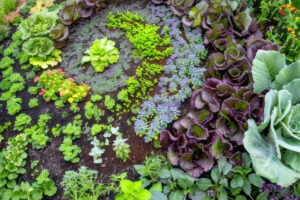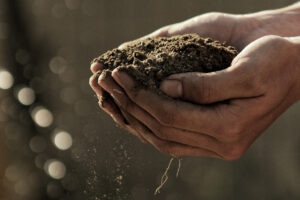During my birth month, I’m indulging in a bit of reflection, not only about my life as I enter the final year of my 50s, but how much the world has evolved during my lifetime. I had a great-aunt and a great-grandmother who lived well into their 90s, both born in the 1800s and leaving us in the 1970s. And I often pondered how much change they had experienced in their lifetimes.
Now, it occurs to me that even in my nearly six decades of life, the world has undergone significant transformation.
The Good, The Bad, and The Ugly (Truth?)…
Or Underutilized Power of Permaculture?
A title inspired by a movie released in the year of my birth seems fitting. I think Blondie, Angel Eyes, and Tuco might even approve. “Mwah-mwah-mwahhh…” (If you don’t get the references, the movie is definitely worth a watch.)
In this post, I’ll explore the good and bad of how our world, and specifically, our food supply and growing methods have changed, through a permaculture lens.
Growth and Growing
During my lifetime, the population has more than doubled. And yet, birthrates have dropped. Global fertility rates have declined significantly, especially in developed nations. The average life expectancy in 1966 was around 56 years. In 2025, it’s over 72 years globally. In 1966, most people lived in rural areas. Now, more than 55% of people live in cities.
In 1966, a loaf of bread cost 22 cents, most families still cooked dinner at home, and the word “organic” wasn’t yet mainstream. Fast forward to 2025, and the food system looks almost unrecognizable. While some changes have brought undeniable benefits, others have led us further from sustainability, food sovereignty, and health. So, how did we get here — and how can permaculture help us chart a better path forward?

Farming: From Local Fields to Global Machines
Monoculture farming — growing a single crop over large areas — may be efficient in the short-term, but it’s harmful in many long-term ways. It depletes the soil and increases the risk of pests and diseases. It reduces resilience by replacing diverse ecosystems with a biological desert. Plants grown this way usually rely on chemicals to survive, which does our environment no favors.
Right now, in 2025, Bill Gates is estimated to own approximately 275,000 acres of farmland across 17 US states, making him the largest private farmland owner in the United States. Gates claims that his investments in farmland are aimed at increasing agricultural productivity and promoting sustainable farming practices. Whether or not this is true, it is always interesting to keep an eye on what the wealthiest people in the world are focusing on. Of course, there is no way of knowing what will happen with the land in the future. All I know is that farming isn’t what it used to be…

The Good:
Over the last six decades, farming has become much more technologically advanced. Tractors can now drive themselves using GPS. Drones monitor crops. Global hunger rates fell dramatically between the 1960s and early 2000s.
The Bad:
That productivity came at a cost:
- Soil degradation from monocultures and chemical input reliance.
- Loss of small farms and rural communities.
- Fossil fuel dependence for machinery, transport, and synthetic inputs.
Permaculture Solutions:
- Regenerative Agriculture: Use cover crops, compost, and rotational grazing to rebuild soil naturally.
- Agroforestry and Polyculture: Mimic nature with plant guilds and multi-story cropping instead of single-crop fields.
- Local Resilience: Support small-scale, community-based food systems that reduce transport emissions and increase self-reliance.
What is Permaculture?
It has meant the world to me…

Gardening: Lost Skills, Renewed Interest
The Good:
Gardening knowledge is now at everyone’s fingertips. Many resources like YouTube channels, blogs, and online communities empower people to grow food in cities, on balconies, and even indoors. While some of these skills may have skipped a generation due to lack of interest, it’s not too late to embrace this knowledge.
The rise of permaculture, native plant gardening, and zero-waste lifestyles is helping reconnect people with their land and food.
The Bad:
- Generations grew up without gardening skills, disconnected from growing and preserving food.
- Legal barriers like HOA restrictions and city ordinances still block many people from growing food at home.
- Seed diversity is shrinking due to consolidation by a few major corporations.
Permaculture Solutions:
- Seed Saving and Libraries: Create local exchanges and preserve heirloom, open-pollinated varieties.
- Food Not Lawns: Turn ornamental lawns into edible gardens using lasagna gardening or sheet mulching.
- Grow Guilds: Use companion planting strategies that support pest resistance, soil fertility, and biodiversity.

Diet and Nutrition: More Knowledge, More Processed Food
The Good:
Today we know more than ever about:
- Macronutrients and micronutrients
- Food allergies and sensitivities
- The benefits of plant-based and whole food diets
The Bad:
- Ultra-processed foods dominate the modern diet — loaded with sugar, seed oils, additives, and empty calories.
- Rising rates of obesity, diabetes, and heart disease are linked to modern food patterns.
- Fast food and packaged meals have replaced family meals and traditional food cultures.
Permaculture Solutions:
- Grow Nutrient-Dense Foods: Leafy greens like kale and spinach, berries, bananas, and beans thrive in a Florida food forest.
- Reconnect with Food Culture: Cook with whole ingredients, ferment foods, and share meals in community.
- Diversify Diets Through Gardening: Even a small food forest can grow nutrient-rich plants not found in grocery stores, like loquats, moringa, yacon, or longevity spinach.

Food Supply: More Access, More Fragility
The food supply has undergone significant changes since the 1960s. Some of these changes have improved access and efficiency, but many have also led to health, environmental, and social concerns. Then, food was mostly grown locally. Imported foods were luxury or seasonal.
The Good:
- Food can now be shipped globally, giving many people access to bananas in winter or quinoa from the Andes.
- Cold storage and food preservation have improved dramatically, reducing spoilage.
- Food safety laws have helped lower outbreaks of foodborne illness in many countries.
The Bad:
- Supply chains are fragile, as seen during COVID-19, wars, and climate events.
- Biodiversity loss means we rely on fewer plant species, making the food system more vulnerable.
- Food deserts persist, especially in low-income or rural areas with no access to fresh produce.
Permaculture Solutions:
- Decentralize Food Systems: Grow food in yards, schools, neighborhoods, and public spaces to increase food security.
- Perennial Polycultures: Diversify the types of crops and species we grow—resilient systems bounce back from disruptions.
- Rainwater Harvesting & Soil Building: Make food production viable in more places, even during droughts or economic hardship.
A Regenerative Future Is Still Possible
The environment has deteriorated since 1966, leading to increased emissions, higher pollution levels, and biodiversity loss. Despite rampant wastefulness and rapid population growth (3.6 billion in 1966 to 8.2 billion in 2025), growing awareness, cleaner technologies, and stronger regulations offer hope. However, current efforts aren’t enough to reverse dangerous trends.
The shift from 1966 to 2025 has brought incredible innovation — but also serious ecological, social, and health consequences. If we continue to rely on the same extractive systems, the future may be even more fragile. But if we learn from the past, apply permaculture principles, and rebuild local resilience, we can still grow a future that is abundant, diverse, and nourishing for all.
We can each make a difference. Even one raised bed, one fruit tree, or one compost pile can be an act of resistance and regeneration.
Copyright © 2025 Fruitful Food Forestry & Lauren Lynch. No portion of the original content on this website may be reproduced, in any language, without express written consent.
PERMACULTURE LIFE









Leave a Reply
Your email is safe with us.